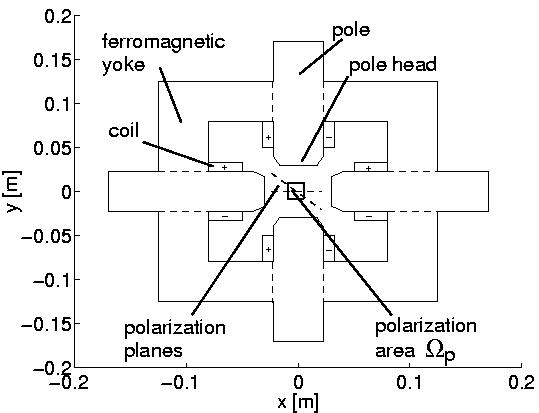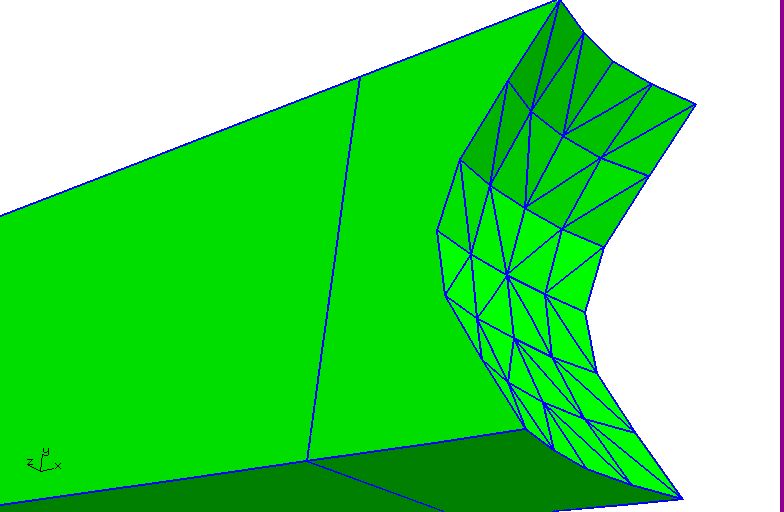
|
So-called homogeneous electromagnets produce magnetic fields
homogeneous in a certain area. The electromagnets are widely used
for thin magnetism study. This is useful, e.g., for development
of magnetical and optical data storage media like compact and
magnetic disks. The electromagnets are produced at the
Institute of Physics,
VSB - Technical University of Ostrava
by the research team around Prof. Jaromir Pistora. They have been
used
- at the
Institute of Physics,
VSB-Technical University of Ostrava, Czech Republic
- at the
Institute of Physics,
Charles University in Prague, Czech Republic,
- at the
National Institute of Applied Sciences INSA
in Toulouse, France,
- at the
Department of Physics,
Simon Fraser University in Vancouver, Canada,
- and at the
Department of Chemistry,
Simon Fraser University in Vancouver, Canada.
|
The measurement of Kerr's effect is as follows.
A sample of magnetooptic properties is placed in the middle
of the electromagnet. Rays of a defined polarization are
passed to the sample from which they reflect. The polarization
of the reflected rays is measured in terms of Kerr's rotation.
The magnetic field in the middle is to be as homogeneous
as possible. The homogeneity is influenced by the shapes
of the pole heads. We are looking for an optimal design of them.
Concerning the mathematical model, 3-dimensional linear
magnetostatics is considered. A weak formulation in H(curl)
is discretized by means of the Finite Element Method whereas
Nedelec's linear edge elements are involved. This leads to
a system of linear algebraic equations that are solved
by the Preconditioned Conjugate Gradient Method with a multigrid
preconditioner.
Concerning the optimization, we are looking for an optimal
piecewise linear shape of the pole heads which is the linear
interpolation of a Bezier surface.
We minimize a cost functional being an integral of differences
of the magnetic field in the polarization area from its average
value there. The existence of an optimal design is proven.
|

|

|
The problem is solved usign scientific computing tools
developed within the
Special Research Programme SFB F013
"Numerical and Symbolic Scientific Computing" at the
University of Linz, namely using the mesh generator
Netgen,
the Finite Element Code
Fepp
and the Algebraic Multigrid package
Pebbles.
Concerning the optimization we use a Sequential Quadratic
Programming algorithm with an updating formulae of the Hessian
matrix where the sensitivities are calculated by means
of the adjoint method of the semi-analytical sensitivity analysis.
Moreover, we introduce a hierarchical optimization strategy.
First we discretize the problem on a coarse grid and the optimized
design of only two design variables is used as an initial guess
for the next finer discretized problem, etc. We compare
the hierarchical strategy with the classical one where
we discretize the problem on the finest grid only and
as an initial design we do not use any coarse optimized shape but
the original one. We can see that this strategy
significantly saves the computational time.
|
|
After a 2-dimensional optimized design the pole heads were
produced, the magnetic field was measured and the improvements
in terms of the objective functional are of a factor 4.5.
Here we present a 3-dimensional optimized shape.
Note that, concerning the so-called homogeneous electromagnets,
we also deal with some more complex geometries.
|

|



